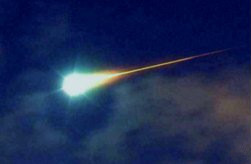




Looking After Your Finds - Reference

A Short History of Metals
Powered By Sispro1

A Short History of Metals
Tin
Smelted copper was rarely pure, in fact, it is clear that by 2500 BC the Sumerians had recognized that if different ores were blended together in the smelting process, a different type of copper, which flowed more easily, was stronger after forming and was easy to cast, could be made. An axe head from 2500 BC revealed that it contained 11% tin and 89% copper. This was of course the discovery of @b(Bronze). However, by 2000 BC copper implements contained very little tin as local reserves of tin had been exhausted. The Sumerians were forced to travel to find the necessary ores. Bronze was a much more useful alloy than copper as farm implements and weapons could be made from it, however, it needed the discovery of tin to become the alloy of choice.
Native Tin is not found in nature. The first tin artifacts date back to 2000 B.C., however, it was not until 1800 B.C. that tin smelting became common in western Asia. Tin was reduced by charcoal and at first was thought to be a form of lead. The Romans referred to both tin and lead as plumbum where lead was plumbum nigrum and tin was plumbum candidum. Tin was rarely used on its own and was most commonly alloyed to copper to form bronze. The most common form of tin ore is the oxide casserite. By 1400 BC. bronze was the predominant metal alloy. Tin's symbol is Sn from the stannum.
Tin is highly malleable and ductile and has two allotropic forms which lead to tin initially having its own disease (tin pest or blight) which was actually formation of alpha-tin below 13 C. As alpha-tin is a highly friable cubic structure with a greater specific volume than beta-tin, during the phase change, which is kinetically limited, nodules of alpha-tin become visible on the surface of beta-tin giving rise to early belief of sickness and the first true doctors of metallurgy. Tin is highly crystalline and during deformation is subject to mechanical twinning and an audible tin cry. Tin is also quite resistant to corrosion.
Tin is found as vein tin or stream tin. The tin ore is stannic oxide and is generally found with quartz, feldspar or mica. The ore is a hard , heavy and inert substance and is generally found as outcroppings as softer impurities are washed away.
Mercury
Mercury was also known to the ancients and has been found in tombs dating back to 1500 and 1600 BC. Pliny, the Roman chronicler, outlined purification techniques by squeezing it through leather and also noted that it was poisonous. Mercury, also known as quicksilver, is the only metal which is liquid at room temperature. Although it can be found in its native state, it is more commonly found in such ores as calomel, livingstonite, corderite and its sulfide cinnabar. Extraction is most simply carried out by distillation as mercury compounds decompose at moderate temperatures and volatilize.
Mercury was widely used because of its ability to dissolve silver and gold (amalgamation) and was the basis of many plating technologies. There is also indications that it was prized and perhaps worshipped by the Egyptians. In 315 B.C., Dioscorides mentions recovery of quicksilver (which he called hydrargyros, liquid silver) by distillation, stating " An iron bowl containing cinnabar is put into an earthenware container and sealed with clay. It is then set on a fire and the soot which sticks to the cover is quicksilver". Methods changed little until the 18th century. Mercury's symbol is Hg from hydragyrum, liquid silver.
Iron
Iron was available to the ancients in small amounts from meteors. This native iron is easily distinguishable because it contains 6-8% nickel. There is some indication that man-made iron was available as early as 2500 B.C., however, ironmaking did not become an everyday process until 1200 BC. Hematite, an oxide of iron, was widely used by the ancients for beads and ornaments. It is also readily reduced by carbon. However, if reduced at temperatures below 700-800 C it is not suitable for forging and must be produced at temperatures above 1100 C. Wrought iron was the first form of iron known to man. The product of reaction was a spongy mass of iron intermixed with slag. This was then reheated and hammered to expel the slag and then forged into the desired shape. In the early days iron was 5 times more expensive then gold and its first uses were as ornaments.
Iron weapons revolutionized warfare and iron implements did the same for farming. Iron and steel was the building block for civilization. Interestingly, an iron pillar dating to 400 A.D., remains standing today in Delhi, India. Corrosion to the pillar has been minimal a skill lost to current ironworkers. Iron is rarely found in its native state the only known sources being Greenland where the iron occurs as nodules in basalt that erupted through beds of coal and two very rare nickel-iron alloys. Iron's symbol is Fe from the latin ferrum.
These seven metals: gold, silver, copper, lead, tin, mercury and iron, and the alloys bronze and electrum were the starting point of metallurgy and even in this simple, historic account we find some of the basic problems of process metallurgy. The problems are:
The ores must be found, separated and sized before use.
The ores must be reacted under a controlled temperature and gas atmosphere.
The liquid metal must be collected and cast into a desired shape.
The metal must be worked to achieve desired final properties and shape.
The Growth of Metallurgy
After the seven metals of antiquity: gold, silver, copper, mercury, tin , iron and lead, the next metal to be discovered was Arsenic in the 13th century by Albertus Magnus. Arsenicus (arsenious oxide) when heated with twice its weight of soap became metallic. By 1641 arsenious oxide was being reduced by charcoal. Arsenic is steel gray, very brittle and crystalline; it tarnishes in air and when heated rapidly forms arsenious oxide with the odor of garlic. Arsenic compounds are poisonous. The symbol As is taken from the latin arsenicum. Arsenic was used in bronzing and improving the sphericity of shot. The most common mineral is Mispickel or Arsenopyrite (FeSAs) from which arsenic sublimes upon heating.
The next metal to be isolated was antimony. Stibium or antimony sulphide was roasted in an iron pot to form antimony. Agricola reported this technique in 1560. Antimony whose name comes from the Greek "anti plus monos"- a metal not found alone, has as its symbol Sb from the latin stibium. It is an extremely brittle flaky metal. Antimony and its compounds are highly toxic. Initial uses were as an alloy for lead as it increased hardness. Stibnite is the most common ore. It was commonly roasted to form the oxide and reduced by carbon.
By 1595,bismuth was produced by reduction of the oxide with carbon , however, it was not until 1753 when bismuth was classified as an element. Zinc was known to the Chinese in 1400; however , it was not until 1738 , when William Champion patented the zinc distillation process, that zinc came into common use. Before Champion's process, zinc, which was imported from China, was known as Indian Tin or Pewter. A Chinese text from 1637 stated the method of production was to heat a mixture of calamine (zinc oxide) and charcoal in an earthenware pot . The zinc was recovered as an incrustation on the inside of the pot. In 1781 zinc was added to liquid copper to make brass. This method of brass manufacture soon became dominant.
One other metal was discovered in the 1500's in Mexico by the Spaniards. This metal was platinum. Although not 100% pure, it was the first metal to be discovered and sourced from the "New World". The property which brought this metal to the prospectors attention was its lack of reactivity with known reagents. Early use of platinum was banned because it was used as a blank for coins which were subsequently gold coated, proving that the early metallurgists understood not only density but also economics. Although, platinum was known to the western world, it was not until the 1800's that platinum became widely used.
Several other metals were isolated during the 1700's. These were Cobalt, Nickel, Manganese, Molybdenum, Tungsten, Tellurium, Beryllium , Chromium, Uranium, Zirconium and Yttrium . Only laboratory specimens were produced and all were reduced by carbon with the exception of tungsten which became the first metal to be reduced by hydrogen.
Smelted copper was rarely pure, in fact, it is clear that by 2500 BC the Sumerians had recognized that if different ores were blended together in the smelting process, a different type of copper, which flowed more easily, was stronger after forming and was easy to cast, could be made. An axe head from 2500 BC revealed that it contained 11% tin and 89% copper. This was of course the discovery of @b(Bronze). However, by 2000 BC copper implements contained very little tin as local reserves of tin had been exhausted. The Sumerians were forced to travel to find the necessary ores. Bronze was a much more useful alloy than copper as farm implements and weapons could be made from it, however, it needed the discovery of tin to become the alloy of choice.
Native Tin is not found in nature. The first tin artifacts date back to 2000 B.C., however, it was not until 1800 B.C. that tin smelting became common in western Asia. Tin was reduced by charcoal and at first was thought to be a form of lead. The Romans referred to both tin and lead as plumbum where lead was plumbum nigrum and tin was plumbum candidum. Tin was rarely used on its own and was most commonly alloyed to copper to form bronze. The most common form of tin ore is the oxide casserite. By 1400 BC. bronze was the predominant metal alloy. Tin's symbol is Sn from the stannum.
Tin is highly malleable and ductile and has two allotropic forms which lead to tin initially having its own disease (tin pest or blight) which was actually formation of alpha-tin below 13 C. As alpha-tin is a highly friable cubic structure with a greater specific volume than beta-tin, during the phase change, which is kinetically limited, nodules of alpha-tin become visible on the surface of beta-tin giving rise to early belief of sickness and the first true doctors of metallurgy. Tin is highly crystalline and during deformation is subject to mechanical twinning and an audible tin cry. Tin is also quite resistant to corrosion.
Tin is found as vein tin or stream tin. The tin ore is stannic oxide and is generally found with quartz, feldspar or mica. The ore is a hard , heavy and inert substance and is generally found as outcroppings as softer impurities are washed away.
Mercury
Mercury was also known to the ancients and has been found in tombs dating back to 1500 and 1600 BC. Pliny, the Roman chronicler, outlined purification techniques by squeezing it through leather and also noted that it was poisonous. Mercury, also known as quicksilver, is the only metal which is liquid at room temperature. Although it can be found in its native state, it is more commonly found in such ores as calomel, livingstonite, corderite and its sulfide cinnabar. Extraction is most simply carried out by distillation as mercury compounds decompose at moderate temperatures and volatilize.
Mercury was widely used because of its ability to dissolve silver and gold (amalgamation) and was the basis of many plating technologies. There is also indications that it was prized and perhaps worshipped by the Egyptians. In 315 B.C., Dioscorides mentions recovery of quicksilver (which he called hydrargyros, liquid silver) by distillation, stating " An iron bowl containing cinnabar is put into an earthenware container and sealed with clay. It is then set on a fire and the soot which sticks to the cover is quicksilver". Methods changed little until the 18th century. Mercury's symbol is Hg from hydragyrum, liquid silver.
Iron
Iron was available to the ancients in small amounts from meteors. This native iron is easily distinguishable because it contains 6-8% nickel. There is some indication that man-made iron was available as early as 2500 B.C., however, ironmaking did not become an everyday process until 1200 BC. Hematite, an oxide of iron, was widely used by the ancients for beads and ornaments. It is also readily reduced by carbon. However, if reduced at temperatures below 700-800 C it is not suitable for forging and must be produced at temperatures above 1100 C. Wrought iron was the first form of iron known to man. The product of reaction was a spongy mass of iron intermixed with slag. This was then reheated and hammered to expel the slag and then forged into the desired shape. In the early days iron was 5 times more expensive then gold and its first uses were as ornaments.
Iron weapons revolutionized warfare and iron implements did the same for farming. Iron and steel was the building block for civilization. Interestingly, an iron pillar dating to 400 A.D., remains standing today in Delhi, India. Corrosion to the pillar has been minimal a skill lost to current ironworkers. Iron is rarely found in its native state the only known sources being Greenland where the iron occurs as nodules in basalt that erupted through beds of coal and two very rare nickel-iron alloys. Iron's symbol is Fe from the latin ferrum.
These seven metals: gold, silver, copper, lead, tin, mercury and iron, and the alloys bronze and electrum were the starting point of metallurgy and even in this simple, historic account we find some of the basic problems of process metallurgy. The problems are:
The ores must be found, separated and sized before use.
The ores must be reacted under a controlled temperature and gas atmosphere.
The liquid metal must be collected and cast into a desired shape.
The metal must be worked to achieve desired final properties and shape.
The Growth of Metallurgy
After the seven metals of antiquity: gold, silver, copper, mercury, tin , iron and lead, the next metal to be discovered was Arsenic in the 13th century by Albertus Magnus. Arsenicus (arsenious oxide) when heated with twice its weight of soap became metallic. By 1641 arsenious oxide was being reduced by charcoal. Arsenic is steel gray, very brittle and crystalline; it tarnishes in air and when heated rapidly forms arsenious oxide with the odor of garlic. Arsenic compounds are poisonous. The symbol As is taken from the latin arsenicum. Arsenic was used in bronzing and improving the sphericity of shot. The most common mineral is Mispickel or Arsenopyrite (FeSAs) from which arsenic sublimes upon heating.
The next metal to be isolated was antimony. Stibium or antimony sulphide was roasted in an iron pot to form antimony. Agricola reported this technique in 1560. Antimony whose name comes from the Greek "anti plus monos"- a metal not found alone, has as its symbol Sb from the latin stibium. It is an extremely brittle flaky metal. Antimony and its compounds are highly toxic. Initial uses were as an alloy for lead as it increased hardness. Stibnite is the most common ore. It was commonly roasted to form the oxide and reduced by carbon.
By 1595,bismuth was produced by reduction of the oxide with carbon , however, it was not until 1753 when bismuth was classified as an element. Zinc was known to the Chinese in 1400; however , it was not until 1738 , when William Champion patented the zinc distillation process, that zinc came into common use. Before Champion's process, zinc, which was imported from China, was known as Indian Tin or Pewter. A Chinese text from 1637 stated the method of production was to heat a mixture of calamine (zinc oxide) and charcoal in an earthenware pot . The zinc was recovered as an incrustation on the inside of the pot. In 1781 zinc was added to liquid copper to make brass. This method of brass manufacture soon became dominant.
One other metal was discovered in the 1500's in Mexico by the Spaniards. This metal was platinum. Although not 100% pure, it was the first metal to be discovered and sourced from the "New World". The property which brought this metal to the prospectors attention was its lack of reactivity with known reagents. Early use of platinum was banned because it was used as a blank for coins which were subsequently gold coated, proving that the early metallurgists understood not only density but also economics. Although, platinum was known to the western world, it was not until the 1800's that platinum became widely used.
Several other metals were isolated during the 1700's. These were Cobalt, Nickel, Manganese, Molybdenum, Tungsten, Tellurium, Beryllium , Chromium, Uranium, Zirconium and Yttrium . Only laboratory specimens were produced and all were reduced by carbon with the exception of tungsten which became the first metal to be reduced by hydrogen.
[2-3]
Copyright All Rights Reserved by Nigel G Wilcox E-Mail: ngwilcox100@gmail.com
Metals
Group Pages
Complimentary Topics
Designed by Nigel G Wilcox
The Paragon Of Metal Detecting
& Archaeology
& Archaeology
Pages
Member NCMD
Reference Menu




















